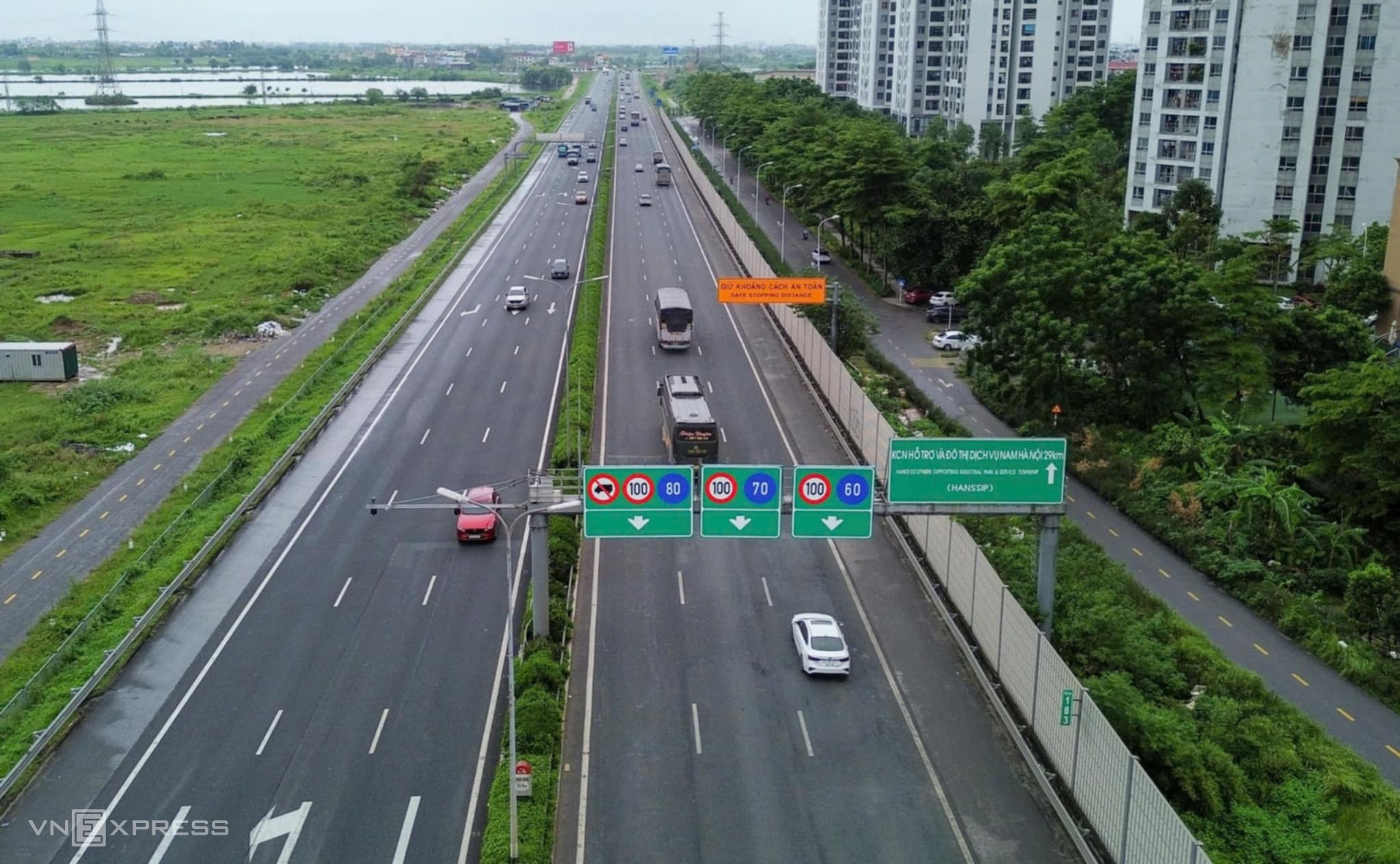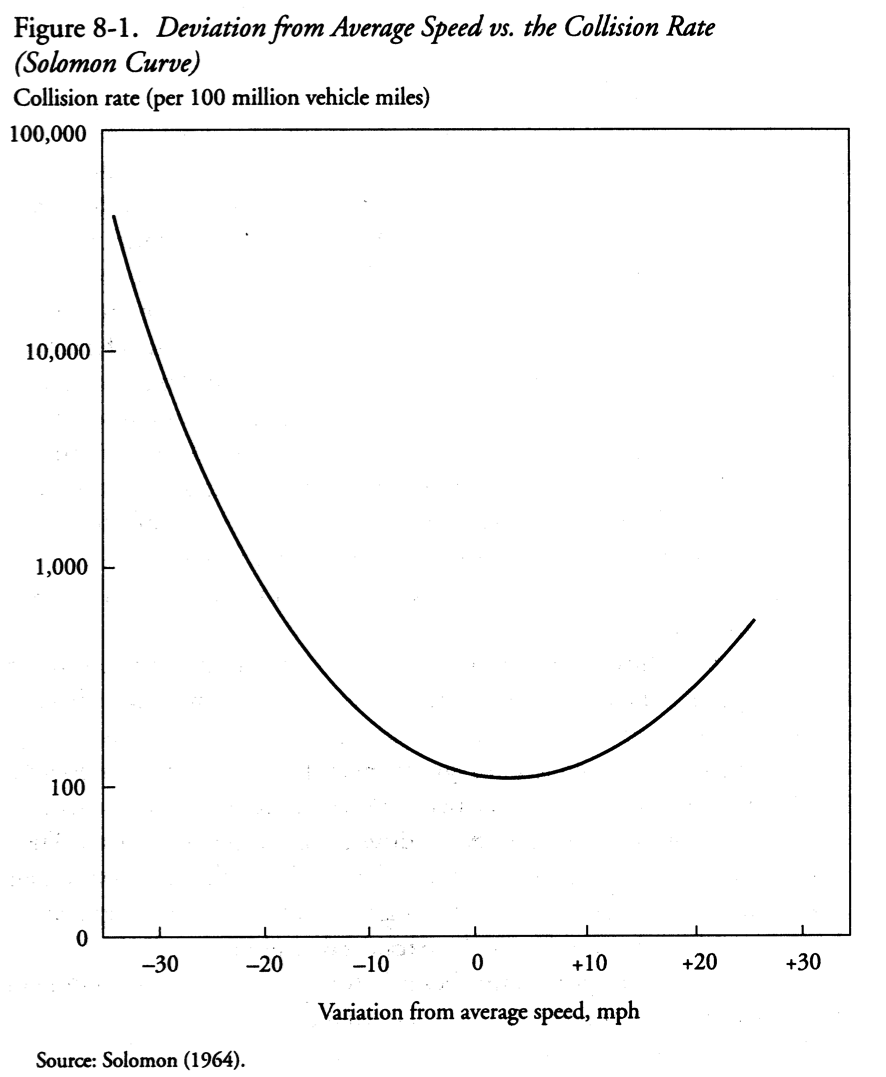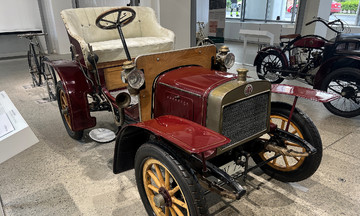Starting 15/8, the Directorate for Roads of Vietnam and the Traffic Police Department initiated a pilot program to divide lanes by speed on the Hanoi - Hai Phong and Phap Van - Cau Gie highways. This initiative restricts trucks from using the lane closest to the median strip to alleviate congestion and prevent traffic conflicts.
However, it's not just trucks in the wrong lane that pose a danger. Vehicles traveling below the minimum speed limit on highways also present significant risks, especially since these roads are designed for high-speed, continuous traffic flow.
 |
Phap Van - Cau Gie highway with lanes divided by minimum speed. Photo: Viet An |
Phap Van - Cau Gie highway with lanes divided by minimum speed. Photo: Viet An
Why is there a minimum speed limit on highways?
Highways are designed for high volumes of vehicles traveling at high speeds to shorten travel times and ensure continuous traffic flow. Therefore, in addition to maximum speed limits, most highways also have minimum speed limits, typically starting at 60 km/h. This helps minimize speed differences between vehicles, synchronizing traffic flow and enhancing safety for all vehicles. It also reduces instances of sudden braking or swerving to avoid unexpectedly slow vehicles.
The dangers of slow driving on highways
Many believe that only speeding is dangerous. However, driving too slowly on a highway can be just as risky.
A vehicle traveling below the minimum speed limit on a highway is essentially a "moving obstacle". When encountering such a situation, vehicles approaching from behind at higher speeds are forced to brake suddenly, increasing the risk of rear-end collisions. In many cases, drivers must swerve to avoid collisions, creating a chain reaction and disrupting traffic flow, potentially leading to multiple-vehicle accidents.
Numerous international studies have confirmed the dangers of vehicles traveling too slowly compared to the designed speed of the road. A well-known 1964 American study by David Solomon, visualized in the "Solomon Curve", demonstrates that accident risk isn't directly proportional to absolute speed, but rather to the deviation from the average traffic speed.
 |
The "Solomon Curve" shows that the probability of accidents increases when vehicles travel too fast or too slow compared to the average traffic speed, peaking when driving below 48 km/h. Photo: Solomon |
The "Solomon Curve" shows that the probability of accidents increases when vehicles travel too fast or too slow compared to the average traffic speed, peaking when driving below 48 km/h. Photo: Solomon
The curve illustrates that when a vehicle travels significantly faster or slower than the majority of other vehicles, the risk of collision increases. This risk is particularly high when a vehicle travels slower than the average flow of traffic. The primary reason is the speed differential, which creates unexpected situations for other drivers, forcing them to brake abruptly or change lanes suddenly. The risk of accidents decreases to its lowest point when a vehicle travels at or slightly above (about 8 km/h) the average speed of traffic.
Furthermore, a 1998 study by the Federal Highway Administration (FHWA) indicated the lowest accident rates occur when vehicles travel near the average speed of other vehicles on the road. The risk increases significantly for vehicles traveling slower or faster than the general flow. Additionally, a 2022 study published in the journal Sustainability modeled slow-moving vehicles as "mobile bottlenecks", causing congestion behind them and increasing the likelihood of chain-reaction collisions.
How to handle slow-moving vehicles in the left lane
When encountering a slow-moving vehicle on the highway, drivers should react cautiously, not impulsively. First, maintain a safe following distance and gradually reduce speed to avoid sudden collisions. If overtaking is necessary, check mirrors, signal early, and only change lanes when it's safe. If a slow vehicle is occupying the left lane, avoid tailgating or flashing headlights. Instead, maintain a safe distance and wait for a safe opportunity to pass in the right or center lane. After passing a slow-moving vehicle or congested area, resume a steady speed that matches the general traffic flow, avoiding rapid acceleration or braking that could endanger vehicles behind.
In many countries, driving too slowly or hogging the left lane on highways is a traffic violation. The general rule is that the left lane is for passing only. After overtaking, drivers should promptly return to the center or right lane to maintain smooth traffic flow. Violations such as driving below the minimum speed limit, occupying the left lane without passing, or obstructing traffic can result in fines, license point deductions, or even license suspension in serious cases.
Ho Tan










